Showing Spotlights 49 - 56 of 237 in category All (newest first):
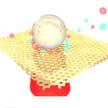 Researchers demonstrate label-free chiral detection of metabolic molecules at picomolar level through microbubble-induced rapid accumulation of biomolecules on plasmonic chiral sensors, which shows a 10-million times enhancement in sensitivity comparing to state-of-the-art plasmonic chiral sensors. The researchers achieved their ultrahigh sensitivity in chiral sensing of biomolecules by utilizing two enhancement mechanisms: the microbubble-induced accumulation of biomolecules onto the chiral plasmonic substrates; and the subsequent plasmon-enhanced chiral sensing.
Researchers demonstrate label-free chiral detection of metabolic molecules at picomolar level through microbubble-induced rapid accumulation of biomolecules on plasmonic chiral sensors, which shows a 10-million times enhancement in sensitivity comparing to state-of-the-art plasmonic chiral sensors. The researchers achieved their ultrahigh sensitivity in chiral sensing of biomolecules by utilizing two enhancement mechanisms: the microbubble-induced accumulation of biomolecules onto the chiral plasmonic substrates; and the subsequent plasmon-enhanced chiral sensing.
Mar 30th, 2021
 Researchers have demonstrated the large-scale fabrication of skin-interfaced printed microfluidic patches, capable of multiplexed electrochemical detection of biomarkers from human sweat. This sensor continuously and simultaneously measures the level of biomarkers such as lactate, Na+, K+, and pH during sweating. The skin-worn sensor can selectively measure analytes even in the presence of other interfering species present in sweat. The patch is integrated with a custom-made miniature printed circuit board that enables multiplexed decoding of sweat and wireless signal transduction to the host devices and is completely free from any sensor-to-sensor transfer of signals.
Researchers have demonstrated the large-scale fabrication of skin-interfaced printed microfluidic patches, capable of multiplexed electrochemical detection of biomarkers from human sweat. This sensor continuously and simultaneously measures the level of biomarkers such as lactate, Na+, K+, and pH during sweating. The skin-worn sensor can selectively measure analytes even in the presence of other interfering species present in sweat. The patch is integrated with a custom-made miniature printed circuit board that enables multiplexed decoding of sweat and wireless signal transduction to the host devices and is completely free from any sensor-to-sensor transfer of signals.
Mar 29th, 2021
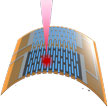 In order to realize practical device applications of stretchable strain sensors, stability without sacrificing sensitivity, stretchability, and scalability is crucial. To that end, researchers report a kirigami-structured graphene-polymer hybrid nanocomposite for strain sensors by a laser direct writing technique on a polyimide sheet. The approach of laser direct writing not only contributes to the conversion of polyimide material into conductively porous carbonized film, but also gives rise to the formation of kirigami-shaped structures with highly stretchable capability in a fast and efficient manner.
In order to realize practical device applications of stretchable strain sensors, stability without sacrificing sensitivity, stretchability, and scalability is crucial. To that end, researchers report a kirigami-structured graphene-polymer hybrid nanocomposite for strain sensors by a laser direct writing technique on a polyimide sheet. The approach of laser direct writing not only contributes to the conversion of polyimide material into conductively porous carbonized film, but also gives rise to the formation of kirigami-shaped structures with highly stretchable capability in a fast and efficient manner.
Mar 23rd, 2021
 An overview of feedback-driven, skin-like multifunctional sensor systems, from the basic material/structural design to applications. Emerging functional nanomaterials and innovative structures for constructing flexible sensors are highlighted, followed by an introduction of various integrated flexible sensor systems. Several categories of feedback sensor systems are described in terms of prosthesis- and AR/VR-based human-machine interfaces, smartphone-based approaches for point-of-care detection, and smart wearable displays for direct signal visualization. The profound significance of these innovations is also highlighted.
An overview of feedback-driven, skin-like multifunctional sensor systems, from the basic material/structural design to applications. Emerging functional nanomaterials and innovative structures for constructing flexible sensors are highlighted, followed by an introduction of various integrated flexible sensor systems. Several categories of feedback sensor systems are described in terms of prosthesis- and AR/VR-based human-machine interfaces, smartphone-based approaches for point-of-care detection, and smart wearable displays for direct signal visualization. The profound significance of these innovations is also highlighted.
Dec 28th, 2020
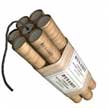 Explosive trace detection (ETD) is a challenging task. Various factors, such as wide variety of compounds that can be used as explosives, the vast number of deployment means, and the lack of inexpensive sensors providing both high sensitivity and selectivity, have made trace detection a complex and costly task. Whereas animals still remain a benchmark for emerging technologies with key attributes being high selectivity, sensitivity, concurrent detection of multiple analytes, and fast screening times, it is likely that nanomaterials will play an important role in the development of much improved future ETD technologies.
Explosive trace detection (ETD) is a challenging task. Various factors, such as wide variety of compounds that can be used as explosives, the vast number of deployment means, and the lack of inexpensive sensors providing both high sensitivity and selectivity, have made trace detection a complex and costly task. Whereas animals still remain a benchmark for emerging technologies with key attributes being high selectivity, sensitivity, concurrent detection of multiple analytes, and fast screening times, it is likely that nanomaterials will play an important role in the development of much improved future ETD technologies.
Aug 26th, 2020
 Researchers report an integrated multimodal flexible sensor system comprising a room humidity sensor, a leaf humidity sensor, an optical sensor, and a temperature sensor that can tap into potential physiological health issues of plants. Using stacked ZIS nanosheets as the kernel sensing media, the flexible sensor can not only perceive light illumination at a fast response, but also monitor the humidity with a perdurable steady performance. The researchers measured in real time three primary abiotic stresses - i.e. humidity, light and temperature - that govern the transpiration of plants are measured without signal cross-coupling effect.
Researchers report an integrated multimodal flexible sensor system comprising a room humidity sensor, a leaf humidity sensor, an optical sensor, and a temperature sensor that can tap into potential physiological health issues of plants. Using stacked ZIS nanosheets as the kernel sensing media, the flexible sensor can not only perceive light illumination at a fast response, but also monitor the humidity with a perdurable steady performance. The researchers measured in real time three primary abiotic stresses - i.e. humidity, light and temperature - that govern the transpiration of plants are measured without signal cross-coupling effect.
Aug 12th, 2020
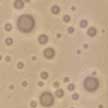 Conventional optothermal microbubble assisted bio-sensing is not suitable for protein sensing due to the high temperatures over 100 dgrees C. To overcome this problem, researchers have demonstrated a proof-of-concept study that reduces the working temperature of bubble generation simply by introducing a volatile, water-immiscible liquid into an aqueous medium. This enables the generation of bubbles at a much lower temperature of around 30 degrees C, not only making this sensing platform compatible with proteins but also enhancing the surface capture of proteins.
Conventional optothermal microbubble assisted bio-sensing is not suitable for protein sensing due to the high temperatures over 100 dgrees C. To overcome this problem, researchers have demonstrated a proof-of-concept study that reduces the working temperature of bubble generation simply by introducing a volatile, water-immiscible liquid into an aqueous medium. This enables the generation of bubbles at a much lower temperature of around 30 degrees C, not only making this sensing platform compatible with proteins but also enhancing the surface capture of proteins.
Jul 27th, 2020
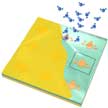 Researchers have turned to M13 bacteriophages as a sensing layer for colorimetric sensors. M13 is a nanoscale, benign virus with a shape that closely resembles collagen fibers. It can change its structure by shrinking or expanding in response to a changing surrounding environment. By using a highly lossy resonant promoter as the substrate, the spin-coated M-13 virus layer exhibits strong resonance even with ultrathin thickness variations, resulting in colorimetric behavior with enhanced chromaticity.
Researchers have turned to M13 bacteriophages as a sensing layer for colorimetric sensors. M13 is a nanoscale, benign virus with a shape that closely resembles collagen fibers. It can change its structure by shrinking or expanding in response to a changing surrounding environment. By using a highly lossy resonant promoter as the substrate, the spin-coated M-13 virus layer exhibits strong resonance even with ultrathin thickness variations, resulting in colorimetric behavior with enhanced chromaticity.
Jul 24th, 2020
 Researchers demonstrate label-free chiral detection of metabolic molecules at picomolar level through microbubble-induced rapid accumulation of biomolecules on plasmonic chiral sensors, which shows a 10-million times enhancement in sensitivity comparing to state-of-the-art plasmonic chiral sensors. The researchers achieved their ultrahigh sensitivity in chiral sensing of biomolecules by utilizing two enhancement mechanisms: the microbubble-induced accumulation of biomolecules onto the chiral plasmonic substrates; and the subsequent plasmon-enhanced chiral sensing.
Researchers demonstrate label-free chiral detection of metabolic molecules at picomolar level through microbubble-induced rapid accumulation of biomolecules on plasmonic chiral sensors, which shows a 10-million times enhancement in sensitivity comparing to state-of-the-art plasmonic chiral sensors. The researchers achieved their ultrahigh sensitivity in chiral sensing of biomolecules by utilizing two enhancement mechanisms: the microbubble-induced accumulation of biomolecules onto the chiral plasmonic substrates; and the subsequent plasmon-enhanced chiral sensing.
 Subscribe to our Nanotechnology Spotlight feed
Subscribe to our Nanotechnology Spotlight feed





